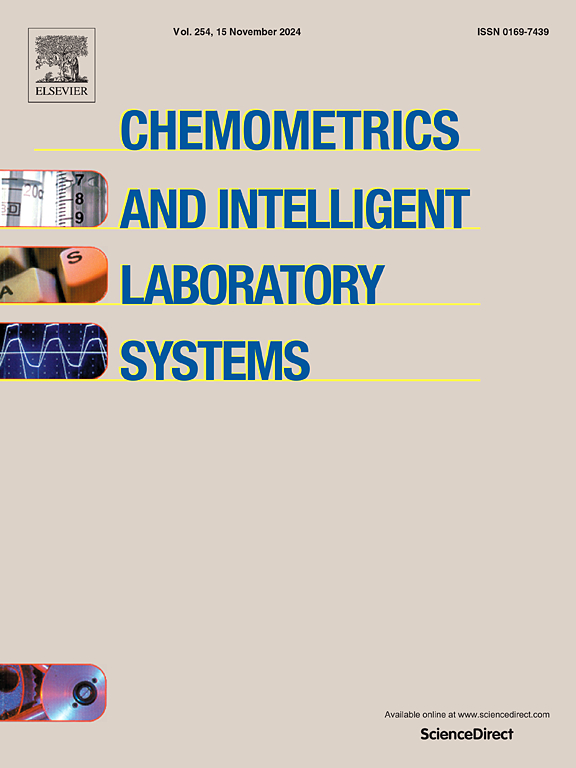人工智能和机器学习与表面增强拉曼光谱(SERS)结合的应用
IF 3.8
2区 化学
Q2 AUTOMATION & CONTROL SYSTEMS
Chemometrics and Intelligent Laboratory Systems
Pub Date : 2025-05-27
DOI:10.1016/j.chemolab.2025.105445
引用次数: 0
摘要
表面增强拉曼光谱(SERS)通过大大增强金属表面分子的拉曼信号,为识别和检测各种化合物提供了卓越的灵敏度。人工智能(AI)和机器学习(ML)的融合进一步改变了SERS应用,使光谱解释自动化,提高了识别精度,并优化了实验设置。本文研究了人工智能和机器学习与SERS在各种学科中的协同使用的当前发展,包括环境监测、食品安全、病原体检测和疾病诊断。已发表的研究表明,这些模型可以区分细菌、病毒、癌细胞和化学物质等分析物,准确率超过95%。一些研究甚至显示了样品鉴定100%的准确性,这一事实表明了这些方法的前景。由于SERS-ML技术具有很高的灵敏度、特异性和可靠性,因此食品安全、环境监测和临床诊断都可能发生革命性的变化。未来的研究应侧重于扩展临床应用,增强底物能力和检测限制,结合复杂的机器学习技术,增加应用范围。为了提高这些方法的稳健性和实用性,还强调在更大的队列和现实环境中进一步验证。该研究展示了如何将AI/ML与SERS相结合,从根本上改变材料研究、环境监测、诊断和其他相关领域的潜力。本文章由计算机程序翻译,如有差异,请以英文原文为准。
Applications of artificial intelligence and machine learning in combination with surface-enhanced Raman spectroscopy (SERS)
Surface-enhanced Raman spectroscopy (SERS) offers exceptional sensitivity for identifying and detecting a wide range of compounds by greatly enhancing Raman signals from molecules on metal surfaces. SERS application has been further transformed by the integration of artificial intelligence (AI) and machine learning (ML), which automates spectrum interpretation, enhances identification accuracy, and optimizes experimental settings. This paper examines current developments in the synergistic use of AI and ML with SERS in a variety of disciplines, including environmental monitoring, food safety, pathogen detection, and disease diagnosis. Studies that have been published show that these models can distinguish between analytes such as bacteria, viruses, cancer cells, and chemical substances with above 95 % accuracy. The promise of these methods is shown by the fact that some research even showed 100 % accuracy in sample identification. Food safety, environmental monitoring, and clinical diagnostics might all be revolutionized by SERS-ML techniques because of their great sensitivity, specificity, and reliability. Future research should focus on extending clinical applications, enhancing substrate capabilities and detection limitations, incorporating sophisticated machine learning techniques, and increasing the application broadness. In order to improve the robustness and practicality of these methodologies, further validation in larger cohorts and real-world contexts is also emphasized. The study demonstrates how combining AI/ML with SERS offers the potential to fundamentally change the fields of materials research, environmental monitoring, diagnostics, and other related fields.
求助全文
通过发布文献求助,成功后即可免费获取论文全文。
去求助
来源期刊
CiteScore
7.50
自引率
7.70%
发文量
169
审稿时长
3.4 months
期刊介绍:
Chemometrics and Intelligent Laboratory Systems publishes original research papers, short communications, reviews, tutorials and Original Software Publications reporting on development of novel statistical, mathematical, or computer techniques in Chemistry and related disciplines.
Chemometrics is the chemical discipline that uses mathematical and statistical methods to design or select optimal procedures and experiments, and to provide maximum chemical information by analysing chemical data.
The journal deals with the following topics:
1) Development of new statistical, mathematical and chemometrical methods for Chemistry and related fields (Environmental Chemistry, Biochemistry, Toxicology, System Biology, -Omics, etc.)
2) Novel applications of chemometrics to all branches of Chemistry and related fields (typical domains of interest are: process data analysis, experimental design, data mining, signal processing, supervised modelling, decision making, robust statistics, mixture analysis, multivariate calibration etc.) Routine applications of established chemometrical techniques will not be considered.
3) Development of new software that provides novel tools or truly advances the use of chemometrical methods.
4) Well characterized data sets to test performance for the new methods and software.
The journal complies with International Committee of Medical Journal Editors'' Uniform requirements for manuscripts.

 求助内容:
求助内容: 应助结果提醒方式:
应助结果提醒方式:


